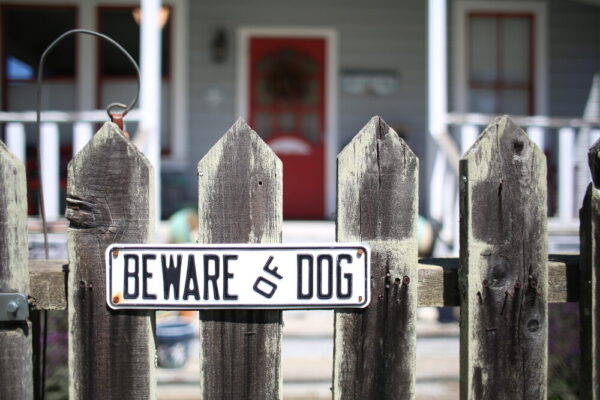Construction job sites are often located near power lines. Most times a warning is posted about working too close to those lines. In this recent New Mexico case, it isn’t clear if a warning was posted or not. In this construction site accident, a worker was electrocuted when his crane boom hit a high voltage power line.
The worker, a Sol Contractor employee, was trying to back away from the crane truck when an electrical current was shot through his body. Emergency service crews rushed him to hospital where he was stabilized and listed in serious condition. There was a small fire on site, but it was put out by the responding firefighters. It took emergency crews 30 minutes to get the crane’s boom off the high voltage cable.
Posted warnings on construction sites is one way to prevent serious injury and death. Another is common sense. OSHA (The Occupational Safety and Health Administration) has issued voluntary guidelines for employers to establish power line safety programs and encourage employers to do more than just comply with their regulations. They believe that a truly effective program goes beyond basic legal requirements. A good program, they say, seeks to prevent injury and death, even when the employer is in compliance with the law.
Major elements of such a program includes management leadership and committment to the program, communicating a clear policy and assigning responsibilities, goal setting, documentation, accountability, and program effectiveness evalution. Employees must be involved and must take "ownership" in the program and decisions regarding its implementation. Employee duties and responsibilities must be clearly communicated and training must be a part of any effective program.
A good program will include a conprehensive worksite analysis of all existing and planned facilities and job sites. Regular inspection should be conducted. Results from the analysis and/or inspection should be analyzed, with corrections and future controls, if necessary. Procedures for employees to notify employers when they observe a potential danger should be clearly communicated to all employees; this reporting system should include protection from negative employment consequences and appropriate response and correction of the hazard identified. If a potential danger is "imminent", reporting and correction requirements should be more specific and urgent. There should be a trained investigative body, and if an accident or "near miss" occurs, an investigation should commence and corrective procedures should be discussed and implemented.
Procedures for use and maintenance of equipment should be a priority. Maintenance schedules should be implemented and rigidly enforced. Training in appropriate use of equipment is also vital to a program’s success. If a problem is discovered, immediate correction must be the goal, and all employees should be trained on the safe use and maintenance of the equipment that they use on the job. Both managers and employees should be taught to recognize the routine hazards of their job. This training should be implemented, ongoing, and employees and managment should be evaluated and updated on a regular basis.
It is unknown, in this construction injury case, exactly what happened to the worker and whether his injuries were preventable or caused by someone else’s negligence. He most certainly would have a workers compensation claim available to him, and, if the accident was caused by the negligence of someone who was not this worker’s co-employee or employer, he might be able to pursue a personal injury lawsuit. His injuries will take a long time to heal and he may be unable to work in the meantime, if ever again. This was a brutally traumatic accident for him. His injuries will take a long time to heal and, if he pursues a case, the case will take a long time to wind through a complex court system. In the meantime, he cannot work and his regular bill as well as accident related bill may cause significant financial issues for him. If he has a viable case, one solution to this problem would be litigation funding. In some states, he can also get litigation funding against his workers compensation claim.
While the injured worker’s case is pending, litigation funding relieves the anxiety of wondering how he will pay his bills and feed his family. It will also help prevent him from settling his case too early for too little because of his financial stress. Attorneys need time to process and pursue serious injury litigation and a financially desperate plaintiff is not a positive influence on settlement negotiations.
So, remember, safety programming, implementation and training may prevent serious accidents from occurring. Encourage your employer to implement such a program, if it hasn’t done so, already. If an accident does happen, claims can and should be pursued through an experienced personal injury attorney. And if, during your pursuit of compensation for an injury, you find yourself struggling to make ends meet, you may want to consider contacting and experienced provider of litigation funding services.
@thumbnail.jpg)
Experienced attorney, lawsuit funding expert, certified civil mediator, and award-winning author of the Zachary Blake Legal Thriller Series. The series features super-trial lawyer Zachary Blake handling "ripped from the headlines" legal and political issues of the day. The series currently consists of Betrayal of Faith, Betrayal of Justice, Betrayal in Blue, Betrayal in Black, and Betrayal High, with a sixth Zachary Blake novel due out later this year. To learn more about these topical social justice legal thrillers. please visit markmbello.com. Mark is a member of the State Bar of Michigan, a sustaining member of the Michigan Association for Justice, and a member of the American Association for Justice.










Comments for this article are closed.